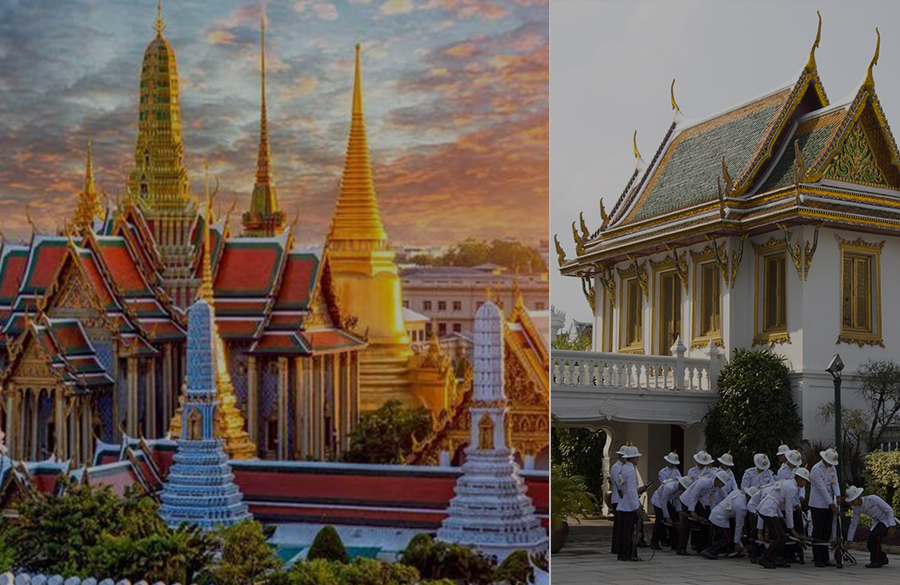Thai architecture embodies its nation’s identity. The Royal Palace of Thailand exuberates this feat very well. With an interesting history of highlighting the Siamese dynasty during times of peril. It serves as a wonderful example of adaptive reuse and evolution as time passes on. Also, it’s a culmination of cultures as the palace has been around since 1782.

The Beginning: Chakri Dynasty and the Burmese attack
The Chakri Dynasty ruled from Ayutthaya which was the seat for Siam for the past 500 years was attacked by the Burmese. Thus the Palace was dismantled, and the materials were transported upstream via the Chao Phraya river. These materials were used to create the new Royal Palace of Thailand. A 218,000 square meters complex, the new administrative and religious center of the country, from 1782-1932.
King Rama I, II, and III: The traditional Kings who established the Palace, thus the original structures which are defined by multi-tiered roofs, bright colors, and detailed structures. Their Throne Halls, Pavilions, and residences are currently defined as the Phra Maha Monthien group. These Kings ruled at times of war, thus they always stayed prepared, virtually, and spiritually. Thus Elephant stables, Barracks were always kept ready. Ho Sastrakhom Hall played a special role in increasing the potency of weapons and was enhanced by the holy water in a special ceremony. The Outer Court was the governmental base which includes various offices and public buildings of The Royal Palace. Royal Institute of Thailand, Pavilion of Regalia, Royal Decorations, and Coins, headquarters. The military architecture still existed at the edges in the form of fortified walls and multiple cannonades, guardhouses, and was given rhyming names.
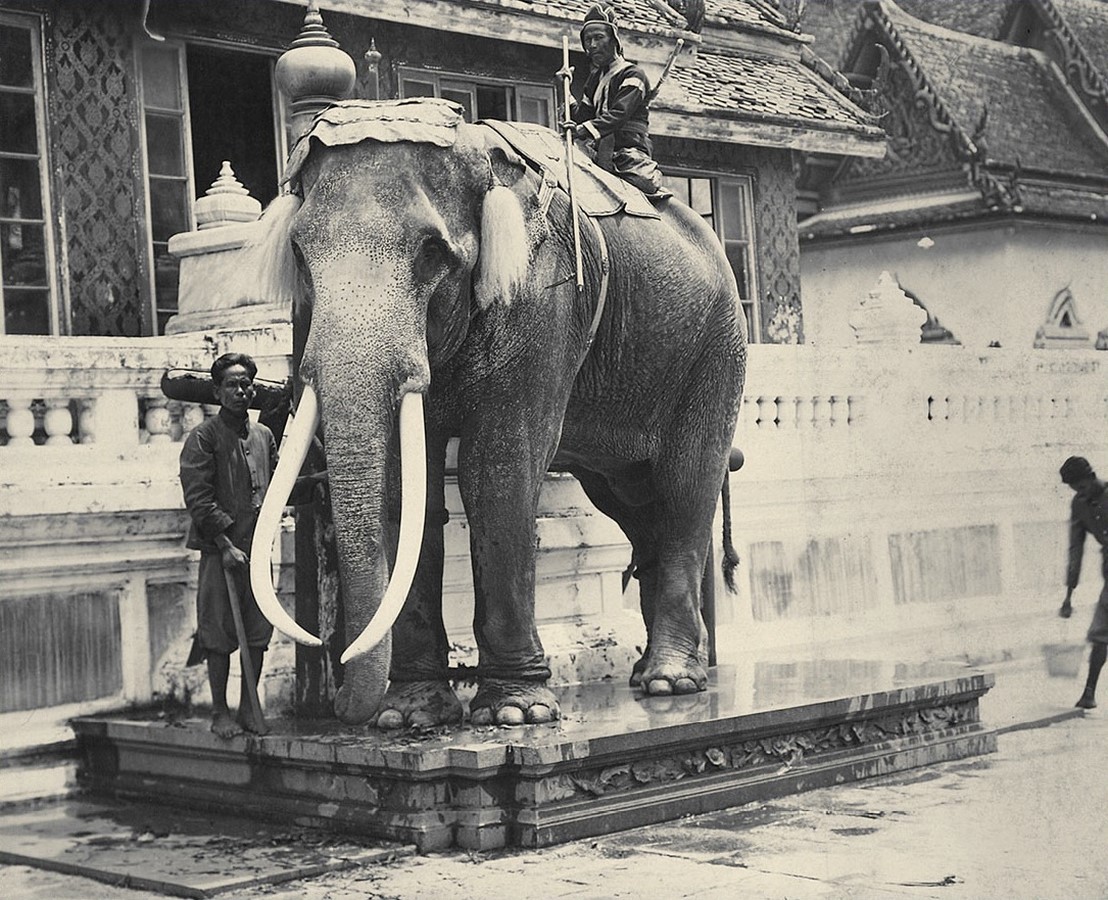
King Rama IV & V: Modernization of Siam
King Rama IV embraced Western innovations and initiated Thailand’s modernization. A stark change in style is observed. The King’s residences were built in European styles, with gilded spires and a Thai roof International relations and trade began due to the onset of the Industrial Revolution. The Phra Thinang Chakri Maha Prasat group is a culmination of Throne Halls, Pavilions, and residences. International Conferences are held here diplomats, dignitaries, and various heads of state come together. King Rama IX has welcomed famous people like Bill Clinton, Queen Elizabeth II, Pope John Paul II, at the Chakri Maha Prasat.
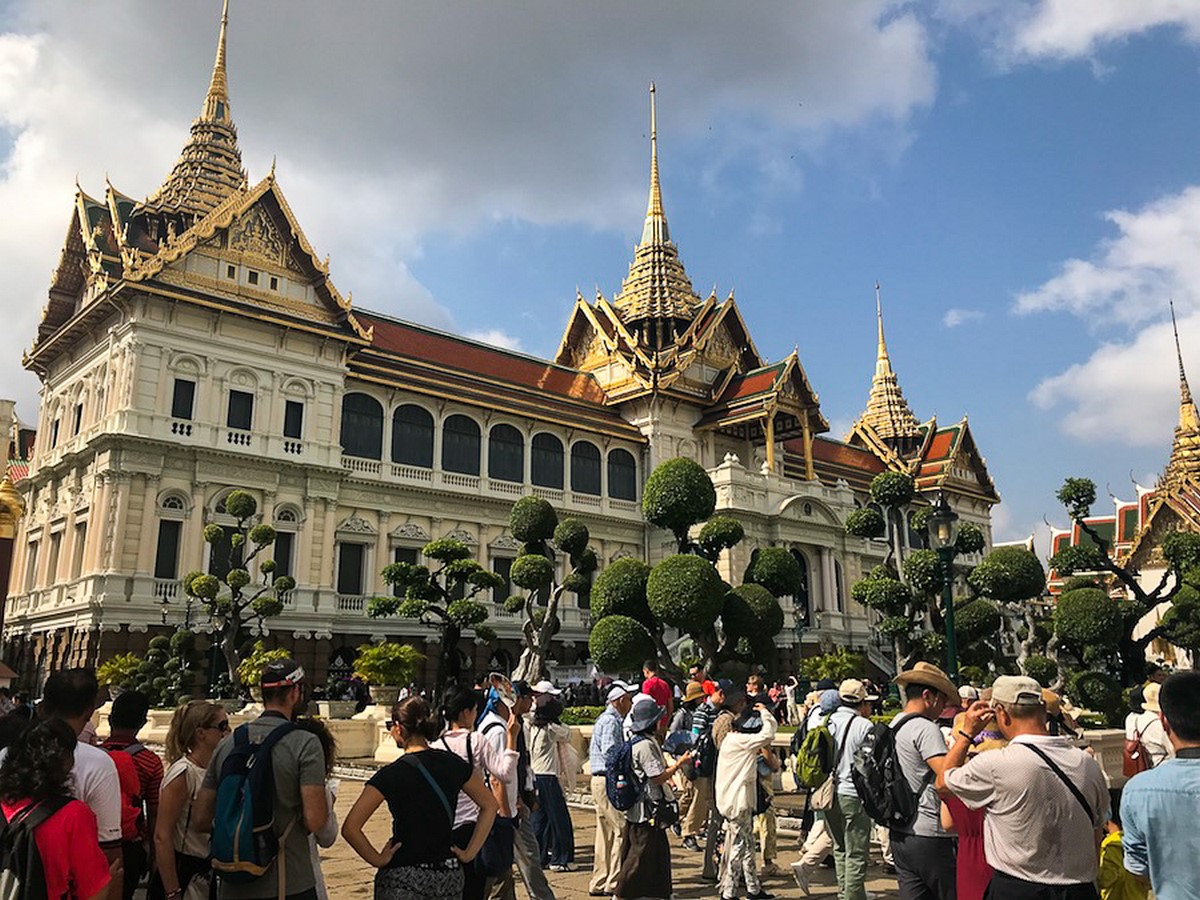
The oldest edifices of the palace are vastly distributed all over the Phra Maha Prasat group with the Thai architecture. There were cruciform shaped halls where each king had placed their own personal Buddha relic and image. Their orientation is based on the direction of the moon. The Shiwalai garden was made around a mango tree where King Rama I liked to sit, and the tradition continued. The greatest change to the area occurred during the reign of King Rama IV when the entire garden was turned into a new residential palace. Composed of several interconnected buildings of various styles and sizes.
Ceremonies and processions played an important role in Siamese history. Thus each King had a different Pavilion and Throne Hall throughout time. Pavilions were placed to address the public while Throne Halls for governmental issues.
Mt. Kailasa, a miniature mountain was also created for a procession and ceremony during Rama IV. A miniature with stone sculptures of mythical animals is also built at the summit.

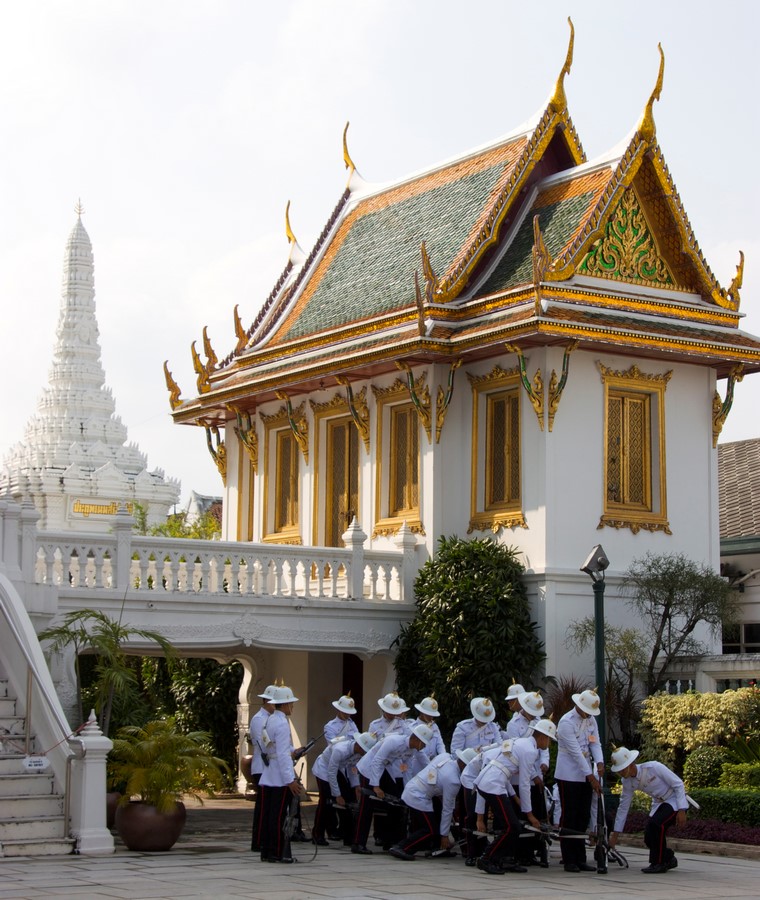
Inner Courts: Thai Amazon
Meanwhile, The queens lived within the Inner Courts. This placed at its system of narrow streets and lawns, having their supply of shops, government, and schools controlled by the royal women. Men on special repair work and doctors were admitted only under the watchful eyes of its female guards (known as Krom Klones). This is a female regiment of women serving as the first line of defense of the inner court. Only Children of the King were allowed to be born here and stay here till puberty to complete the education in the matters of state. This place had less freedom as compared to the “outside world” yet it had covered all the basics and was crucial in protecting the Royal lineage throughout.
The Emerald Temple of the Buddha
It’s an 800-year-old tradition of the Siamese. Thus this larger than life temple exclaims that. Its towering Golden Spires and Colourful imagery throughout. This temple houses a statue of the Emerald Buddha. The statue is carved from jasper in the meditation pose. Considered one of the most important images of Buddha in Thailand. Surrounded by the 12 demon guardians to protect buddha.
Thai architecture throughout its history has gone from need to luxury to display of culture and political power. All cultures across the globe have seen the same process of evolution, where lineages have displayed their power or “left their mark” on a place via an exuberant building. This Palace is the epitome of all. With multiple layers of various traditions throughout its timeline. It’s got distinctly ornamental decorations, stunning interior murals, and vivid imagery of Buddha, which exuberates love and devotion. Wood played a major role not just in crafting statues and motifs, but for roof extensions. Motifs evolved with time from purely wooden to gold and glass mosaics. The floral patterns set a beautiful backdrop for all structures, Thai tradition had a unique eclecticism, stylization, and floridness. Motifs of their mythological tales were constantly carved on building pediments. Garuda, Thai- Hindu Ramayana being the prominent ones. This palace was the peak of the richness of Thai culture since its establishment in the Ayutthaya period and has marveled since then.
Locals thus seek the temples of this place during festivals and even royal processions to find solace. This multitude of traditional studies via visual, written, and structural medium helps in keeping the Thai culture alive and kicking.
Tourists from around the marvel at the structure and it’s reflected in the high numbers that visit this complex every day. There is a strict code of conduct to follow clothing. It’s heavily frowned upon and sometimes entry is also prohibited if these rules are breached.
Thai architecture embodies its nation’s identity and this palace is a vessel that keeps it sailing forward. The people of the land of the Free i.e Thailand take pride in this monument as they should cause it stood for them through turmoil and so many changes till the modern age when Thailand’s international relations are askew.
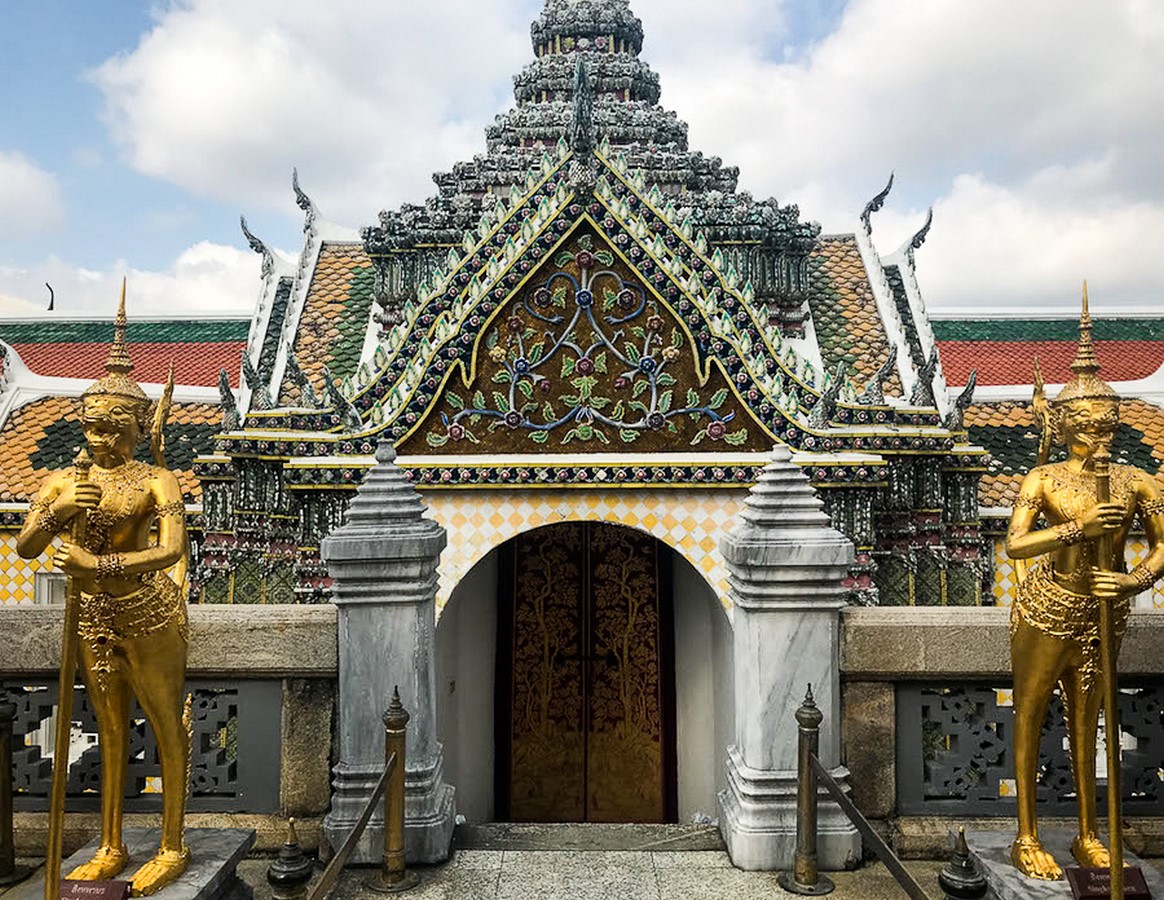
Thus the Royal palace stands as a symbol of prosperity and celebration of culture through troubled times and provides hope for the future and is an important landmark for thai architecture.
©All rights reserved by anekphoto
https://www.flickr.com/photos/anekoho/8401712221


